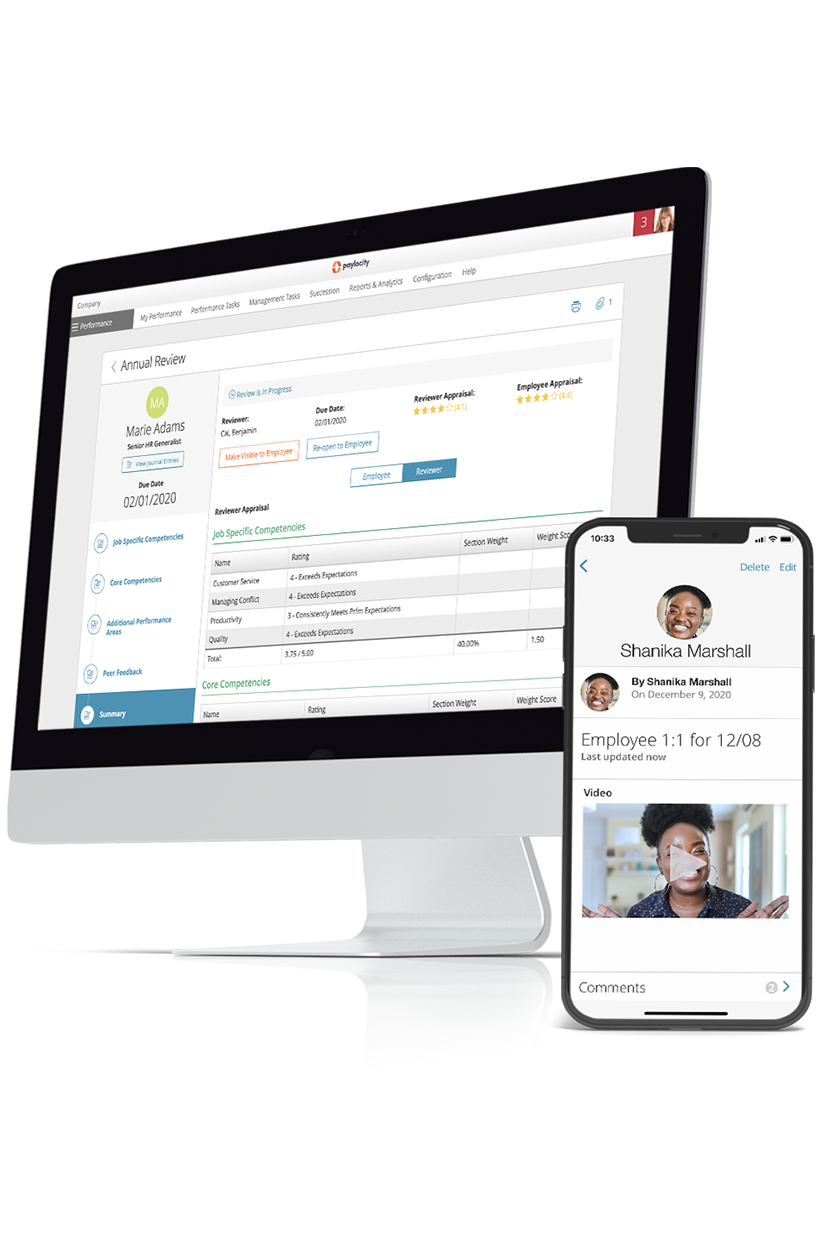Related Learning

Career Pathing: Why It Matters & How to Get Started
Both organizations and employees benefit from defined career trajectories. Learn more about how to supercharge your advancement opportunities.
The Great Resignation has morphed into the Great Reflection.
Today, workers are re-evaluating not just their jobs, but their entire career trajectories. Studies have shown that a whopping 74% of those eager Millennials and Gen Z’ers have their exit signs flashing, not over Monday blues or coffee brews, but due to stalled career growth.
Is your business guilty of overlooking professional development? Then it’s time to start seriously talking about career pathing.
Career pathing is like a GPS for professional growth — employees crave it, and they need your help to map it out. We’re talking upskilling, reskilling, and all the -skillings to keep that talent thriving under your roof.
Dive into this guide, and we’ll walk you through the ins and outs of employee career pathing. It’s not just about filling positions — it’s about crafting a future that has your team sticking around for the long haul.
What is Career Pathing?
Career pathing is the strategic design of an employee’s career progression, setting both immediate and long-term professional objectives. It’s a collaborative effort, orchestrated by your HR and Learning and Development (L&D) teams, to align individual aspirations with organizational needs.
This process ensures that each team member has a clear understanding of their growth trajectory and the milestones along the way. It’s a professional, structured approach to developing your workforce and preparing them for future roles within your organization.
Why Does Career Pathing Matter?
Today’s employees want to work for businesses with clearly defined paths for development and promotion. In fact, 63% of employees who left a job in 2021 did so due to a lack of advancement opportunities.
Career pathing is mutually beneficial for both employees and employers. As leaders help teams achieve their goals, employees respond with greater engagement, productivity, and loyalty.
And, while it’s easy to focus on increased productivity and profitability, don’t overlook the value of decreasing turnover either. Employees who make an internal move instead of looking for a new job elsewhere are more likely to stay with the organization for the long term.
Given that the average cost to hire, onboard, and train a new employee is $4,700, you’re burning heaps of cash when employees churn. So, internal recruitment efforts can help further reduce turnover and save businesses from accruing these costs.
Career Pathing Examples
It’s important to remember that no two career paths will look the same. Progression can be vertical, lateral, or even a mix of the two.
Vertical Career Pathing
Also known as ladder pathing, a vertical career path involves advancing up through an organization’s hierarchy to a higher-paying position with increased responsibility.
Accounting Example
An employee might start by being responsible for entry-level bookkeeping. After a time, they’re promoted to a senior accountant position. From there, they become a partner, managing projects, teams, and clients. Eventually, if all goes well, they may one day end up as CFO or even CEO of the firm.
Marketing Example
As part of their degree, a college student interns with a marketing agency and is later hired as a junior marketer. During this time, they’re trained as a specialist in content marketing before eventually becoming a content marketing manager with their own team.
Lateral Career Pathing
Instead of going up a ladder, an employee’s career path can also take a sidestep to a different role, organization, or even industry. Regardless of where it leads, it can be equally rewarding if the aim is to learn new skills or have different experiences.
As you’ll see, an upward trajectory is still possible after a lateral move, which is also called lattice pathing.
Healthcare Example
Someone starts their medical career as a support worker or healthcare assistant. After a few years of showing promise, their employers assist them in studying to become a registered nurse.
During this time, this individual becomes interested in healthcare technology. They turn down a chance at management and instead leverage their knowledge to train in health informatics. From this fresh career, a completely new progression path opens.
How to Set Up a Career Pathing Framework
44% of employees don’t feel their organizations have compelling career paths. This means you can instantly get a leg up on almost half of the competition by putting in a bit of work in this area. But where should you start?
1. Assess Your Needs
You can’t start planning a compelling career path without knowing your business’ own needs. Use (or first create) an organizational chart for your company, to review all the team members, roles, and reporting hierarchies within your business, visualizing the connections between individuals, teams, and departments.
How well does the chart align with your business models and goals? Auditing your organizational chart will give you a chance to re-organize departments or teams (if necessary) to create a more vertically or laterally structured organization.
2. Define Job Roles and Responsibilities
Using your chart as a reference point, review each position. List out a job description, including the skills needed to perform the role and its responsibilities. Detailed descriptions will help clarify where vertical and lateral pathing opportunities exist.
Next, look for any overlap between those listed skills and roles to identify what upskilling and reskilling are relevant for each path. Consider conducting a skills gap analysis, too — you might find there are new roles your workforce may be interested in as well.
During this step, remember to involve key stakeholders from your L&D teams. As training experts, they can help you forge practical and appealing career paths.
3. Develop a Career Map
Unlike a career path, which is specific to an individual employee, a career map draws out every possible career path within an organization.
Think of a career map like a guide to a big city's public transportation system. Depending on where you start, some destinations have shorter, quicker routes compared to others. Similarly, different vehicles are better suited for different journeys.
A career map will give greater developmental transparency to your teams, so design one for each department that accounts for its most common career paths. When finished, shift to connecting the maps via lateral, interdepartmental career paths.
4. Identify Employee Career Goals
Next, help your employees help you. In other words, during their next one-on-one or regular performance review, ask them what opportunities interest them the most. Formalize this feedback in an individual development plan to build a framework and accountability.
5. Plan Employee Career Paths
With the needs of your business in one hand and the goals of your staff in the other, it’s time to find a happy medium where both objectives line up.
Vertical progression will likely appeal to ambitious employees, so plan learning and development around management and other associated skills for these individuals. Alternatively, those looking to diversify their career paths may prefer a lattice-based path with its opportunities to learn new skills or gain experience in other areas.
Remember, employees often want guidance regarding their career development. 78% of learners expressed the need for course recommendations based on their career goals, so this is where you, the employer, can make a difference.
That same report also found that employees with learning opportunities are 3.5x more likely to feel supported in achieving their goals.
6. Monitor Team Performance
Realistically, not everything will go perfectly according to plan, which is why every career map and pathing should have room for flexibility. Some employees may not excel as you hoped, while other team members might reveal hidden talents and abilities that are valuable in roles other than the ones you’re aiming them at.
Track and monitor team performance using reviews, employee engagement surveys, and a learning management system (LMS). Some HR software platforms can streamline this step and free up your teams to focus on helping workers reach their career path targets.
Data may show that one team member needs mentoring while another requires greater access to on-demand training. It’s up to your team to help everyone stay the course and adjust when necessary.
Bonus: Create a Career Pathing Template
- Personal details
- Short-term career goals
- Long-term career goals
- Knowledge, skills, and abilities (KSAs)
- Individual development plan
- Progress monitoring
- Regularly scheduled reviews
Periodically update and adjust these templates for everyone.
Career Pathing Best Practices for Retaining Talent
Don’t Hyperfocus on Managerial Roles
Remember, not everyone is cut out for management. Don’t only focus on just senior positions and C-suite progression. Instead, design career paths that work for every role within your organization. Many team members want to see a path that helps them develop new skills and improve their existing ones.
Ask the Right Career Development Questions
When developing a career path program, managers must ask the right questions, such as:
- Where do you want your career to head in the next year? What about in three to five years?
- How do you think you could make a more significant impact at the company?
- What skills of yours should be developed for you to reach your career goals?
- Do you feel any of your skills or strengths are being underutilized?
Keep Business Goals at the Heart of Career Pathing
As HR professionals, it can be tempting to try and make everyone happy. You can do this — but only insofar as it makes practical business sense.
Don’t promise a career path beyond the company's scope that’ll require spending unnecessary time and money on development with little benefit to the business.
Drive Employee Growth and Career Development with an Effective Performance Management System
Career pathing keeps your employees engaged and improves retention, but you need the right tools for the job. Paylocity’s all-in-one HR and Payroll software is built to drive employee growth with features like:
- Customizable career leveling within the employee database for building more defined career paths and headcount reporting.
- Track individual performance with 360 feedback modules and self-reflection journals to keep career development top of mind throughout the year.
- House professional development coursework within a robust learning management system that’s accessible from any device.
Why not request a demo today to discover how Paylocity makes career pathing a breeze?

Level Up Employee Performance
Help your employees reach their full potential with modern performance management tools. From goal setting to personalized reviews and ongoing feedback, our solutions enable transparent, two-way communication and encourage employees to take ownership of their growth. Employees expect continuous development and support — give it to them with Performance Management from Paylocity.


?$Hero-Card$)